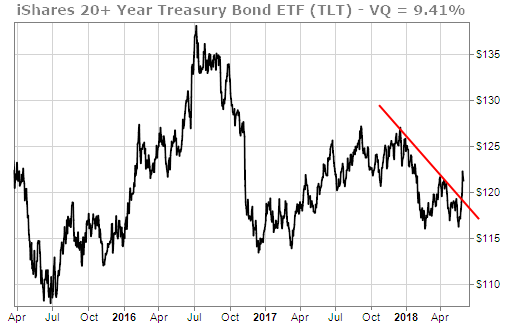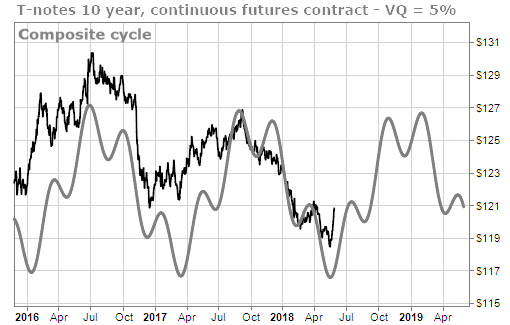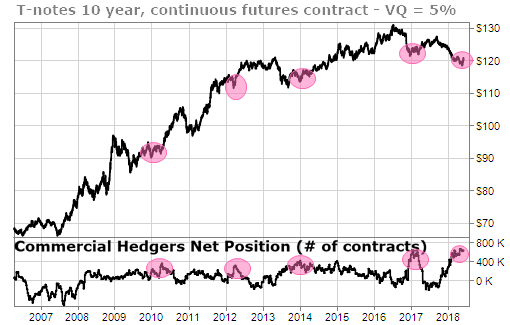We’ve covered the implications of a global “trade war” multiple times in recent months.
For example, on April 6, we said “The Market is Telling Us The Threat of Trade War is Real.”
And on May 25, we said “The Strong US Economy (and Rising US Dollar) is Powering Small Caps Higher.”
(The trade war threat helps U.S. small caps because they are more “domestic” in terms of revenues and profits … and sheltered by the strength of the U.S. economy … whereas large caps are more international and thus threatened by trade war.)
Well, the possibility of trade war is no longer theoretical or just a “threat.” It is officially here. And the arrival of trade war makes us bullish on U.S. Treasurys.
Adding exposure to U.S. Treasurys here makes sense along with exposure to equities — because Treasurys could go much higher if trade war fears lead to a market breakdown.
What do we mean when we say “trade war is here?”
The United States confirmed this week, as of May 31, that 25% duties on imports of steel and aluminum will be placed on Europe, Canada, and Mexico.
Europe and Canada responded by announcing retaliatory measures. Canada and Mexico announced their own tariffs on U.S. goods, and more retaliation measures are coming.
Earlier in the week, tough trade measures were also announced against China (catching Beijing by surprise). A global trade war is now official.
Politics aside, trade war is potentially a big negative for international corporate profits. This will make investors increasingly nervous.
Investors are also increasingly nervous about the growing threat of a eurozone debt crisis, similar to the crisis Europe had in 2012, due to troubles in Italy this time (last time it was Greece).
These factors increase the attractiveness of U.S. Treasurys as a “flight to safety” trade. When markets go into intense worry mode, Treasurys become a popular place to hide. (In 2008, at the height of the financial crisis, they nearly went vertical.)
Treasury bond prices surged this week, breaking out of a downtrend that had been in place for months. You can see it in the price action for TLT, the 20+ year Treasury bond ETF. This is the investor fear factor at work. Growing concern over trade war fallout could send TLT higher still.

A trade war also has the potential to amplify worries about Europe.
The U.S. economy is probably strong enough to weather an ugly trade war and maintain growth. Europe’s economy though, not so much. If Europe weakens, the euro will weaken even more (it has plummeted in recent weeks). That will make the U.S. dollar stronger, increasing the pressure on emerging markets.
All of this creates a potential feedback loop that is bullish for U.S. Treasurys. And there are other bullish factors at work too. Our time-cycle analysis on the U.S. 10-year note, for example, is strongly bullish. This increases the odds Treasurys could rise from here.

The positioning of commercial hedgers is also very favorable. In the futures markets, commercial hedgers are known as “the smart money” because they generally have the deepest pockets and the best information. Right now the futures positioning for commercial hedgers is at its most bullish in years.

We have expressed bullishness on U.S. small caps as investors seek shelter in the domestic U.S. economy. A bullish treasury stance could be a good pairing for that exposure.
If the markets get worried enough to hurt the rising small caps trend, fearful investors are likely to start plowing their money into Treasuries.
To recap, the arrival of full-blown trade war is a fear factor that could propel treasuries higher. Our time-cycle analysis, along with an upside trend breakout and bullish positioning from the “smart money,” also favor more upside. And the trade is a potentially good pairing with long equity exposure, as a sell-off in U.S. stocks would make a “flight to safety” Treasurys play even more attractive.





